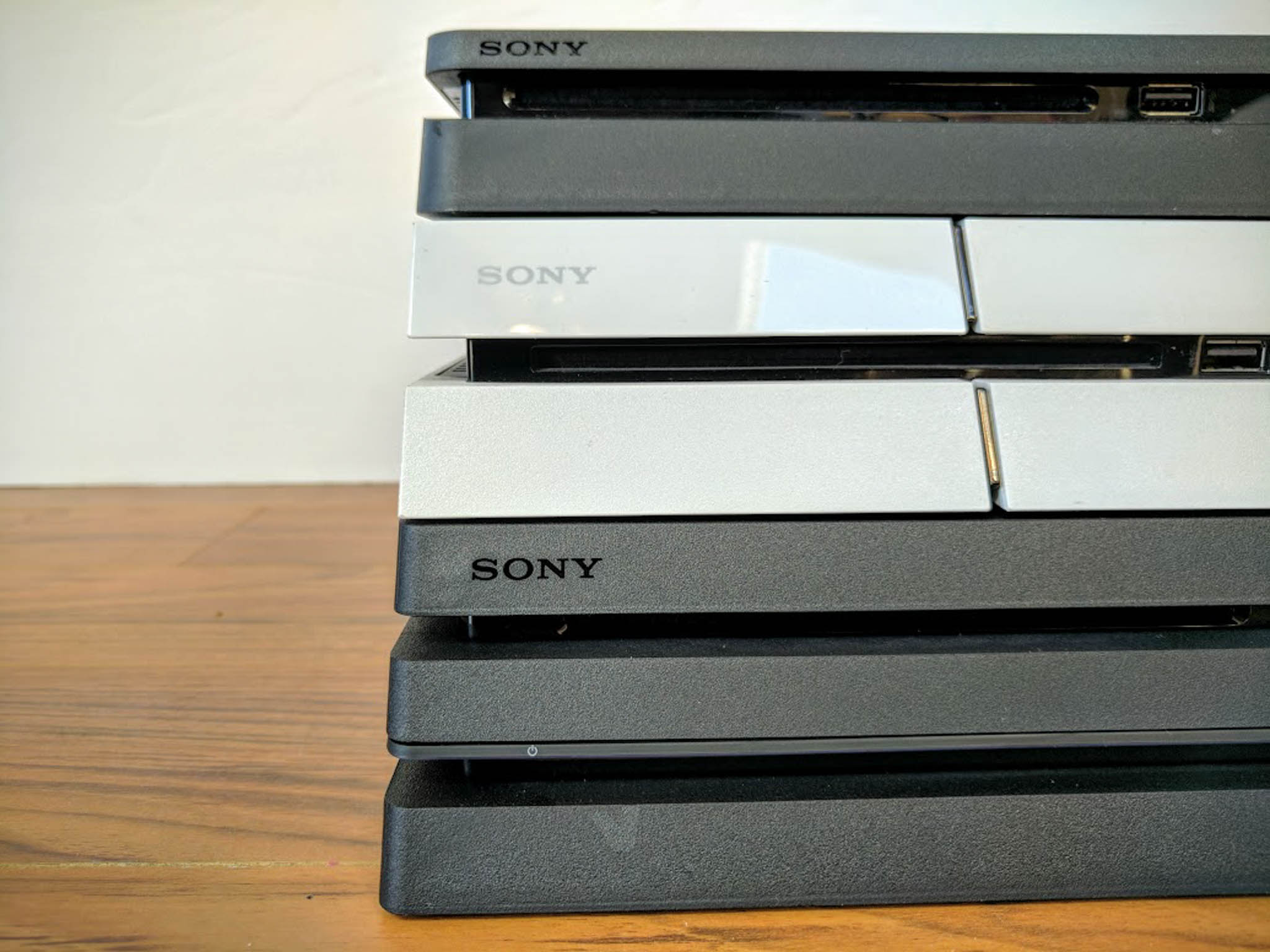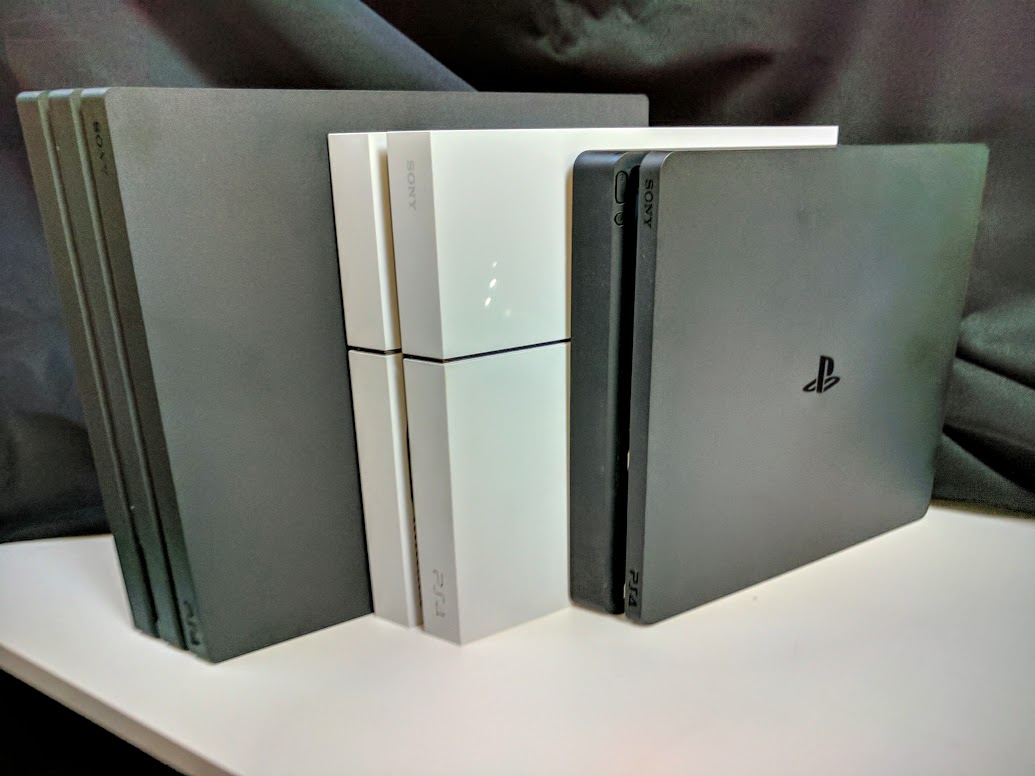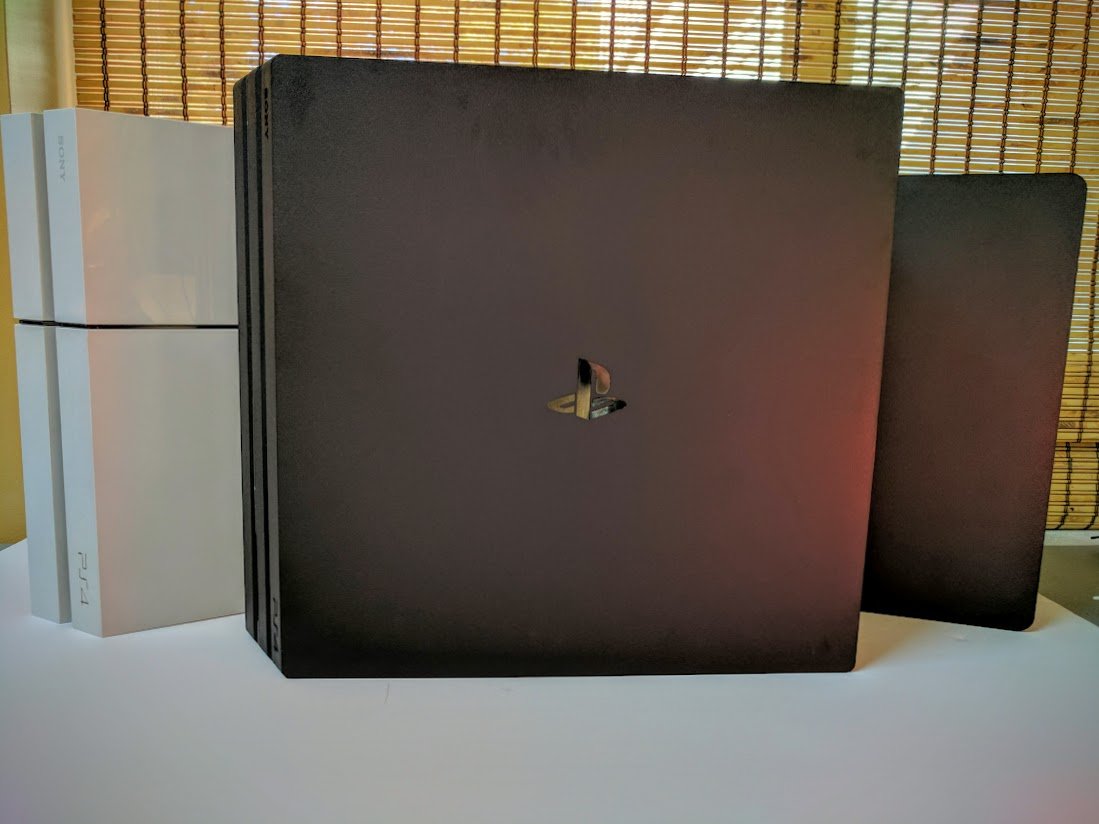Which PlayStation 4 should I buy?
Anyone looking to buy a PlayStation for family now have three options that look very similar. You've got the original PlayStation 4, the new slimmer PlayStation 4 with the exact same branding on the box as the original, and the new PlayStation 4 Pro. Do they all offer similar experiences? Is there a downside to buying the original over the slim? There are a lot of unanswered questions here.
It's confusing by anyone's standards, so your best bet is to know what you need before you head into the store.
What's the difference?
Sony has a history of releasing a "slim" version of the PlayStation a couple of years after its initial release. In the past, those consoles have been labeled a little differently at launch to make it easier to tell the new version apart from the old one. These slimmer versions typically offer more a physical difference than a functionality difference, and this year is no different. The significant feature and performance difference comes with the PlayStation 4 Pro, and even then the difference isn't huge unless you own a 4K television with HDR support.
| Category | PlayStation 4 (2013) | PlayStation 4 (2016) | PlayStation 4 Pro |
|---|---|---|---|
| Price | $259 | $269 | $399 |
| Dimensions | 10.83in x 12.01in x 2.08in | 10.43in x 11.34in x 1.54in | 11.61in x 12.87in x 2.17in |
| CPU | AMD Jaguar 8-core (x86-64) | AMD Jaguar 8-core (x86-64) | AMD Jaguar 8-core (x86-64) |
| GPU | AMD Radeon (1.84 TFLOP) | AMD Radeon (1.84 TFLOP) | AMD Radeon (4.2 TFLOP) |
| Storage | 500GB / 1TB | 500GB / 1TB | 1TB |
| Optical out | Yes | No | Yes |
| WiFi | 802.11b/g/n (2.4GHz) | 802.11b/g/n (2.4GHz + 5GHz) | 802.11b/g/n (2.4GHz + 5GHz) |
| AV out | AV/HDMI 1.4 | HDMI 1.4 | HDMI 2.0 |
| Power consumption | 250w max | 165w max | 310w max |
| 4K Streaming | No | No | Yes |
| USB | USB 3.0 (x2) | USB 3.0 (x2 ) | USB 3.0 (x3) |
| PSVR support | Yes | Yes | Yes (Enhanced) |
The biggest functional difference between the original PS4 and the new slimmer PS4 is power consumption. Sony claims the new PS4 has a max power draw of 165 watts, which sounds impressive next to the original 250w max of the first PS4 until you see most benchmarks. The original PlayStation 4 had an average power draw of 150w during its heaviest gameplay sessions, and never pushed anywhere near that 250w max. It is slightly smaller though, so there's that.
PlayStation VR performance is something altogether different.
As you can see, Sony is using the same CPU and a GPU that's a little more than twice the performance in the new PlayStation 4 Pro. There's also an updated version of the HDMI standard in the PS4 Pro, but there's no immediate difference in performance out of the box for video output. Games that struggled in the past to maintain 30fps or 60fps on a standard PlayStation 4 will be able to offer a more consistent experience with the PlayStation 4 Pro through its "boost mode" feature. This basically means games that appear a to stutter a little on a normal PS4 will look and play smoother on a PS4 Pro.
PlayStation 4 Pro also offers 4K video streaming and enhanced graphics on supported titles. Game developers will have the option to offer higher quality graphics to PlayStation 4 Pro gamers, which will be clearly labeled with PS4 Pro Enhanced on the box. Not only are most new PlayStation games being made to support this Enhanced ability, many of the more popular games from the past year are releasing updates to look better through the more capable console.
Take a look at every PS4 Pro Enhanced game you can buy today!
As for HDR support, while all of these consoles are technically capable of outputting HDR visuals thanks to a software update from Sony, the HDR content offered by almost every app and game doesn't apply to anything but the Pro. HDR is typically tied to either 4K content or PS4 Enhanced content, neither of which will play on these older consoles.
| Category | PS4 (2013) | PS4 (2016) | PS4 Pro |
|---|---|---|---|
| HDR Output | 🤔 | 🤔 | ✔️ |
| 4K Streaming | ❌ | ❌ | ✔️ |
| Remote Play | 720p | 720p | 1080p |
| Share Play | 720p | 720p | 1080p |
PlayStation VR performance is something altogether different. PlayStation 4 Pro was built to better support PlayStation VR (You know, Project Morpheus and PlayStation Neo kinda go together and all that) but even here the differences are subtle on many titles.
Most titles that were available before the Pro was released look slightly better on the Pro, and those titles updated to support the enhanced graphics in the Pro are noticeably better looking than on the standard PS4. Because of the high focus on framerate in PlayStation VR, what you'll see in Pro Enhanced titles is more detail, not smoother transitions like you'd see on the television.
Which should I buy?
Now that you know everything you need to know about the differences between these consoles, lets break it down!
- PlayStation 4 — This is the PS4 most likely to be available at a considerable discount, or the option you're most likely to find used or certified refurbished. If you're on a tight budget, this is still a great modern console.
- Slim PlayStation 4 — This is the PS4 you will see the most of on shelves this year, and it's the nicer looking of the three. This is also the most likely to be found in a bundle with free games and extra controllers if you're looking to get more than just the console.
- PlayStation 4 Pro — If you own a 4K HDR television, or you're interested in the best possible gaming experience from your PlayStation, this is the console for you. Also, if you're looking to go all in on PlayStation VR, you'll want this version of the console.
Update April 2018: This article has been updated with new information on PlayStation 4 updates and new bundles available for the current models.



0 Response to "You Can See More: PS4 vs. PS4 Slim vs. PS4 Pro: Which should you buy?"
Post a Comment